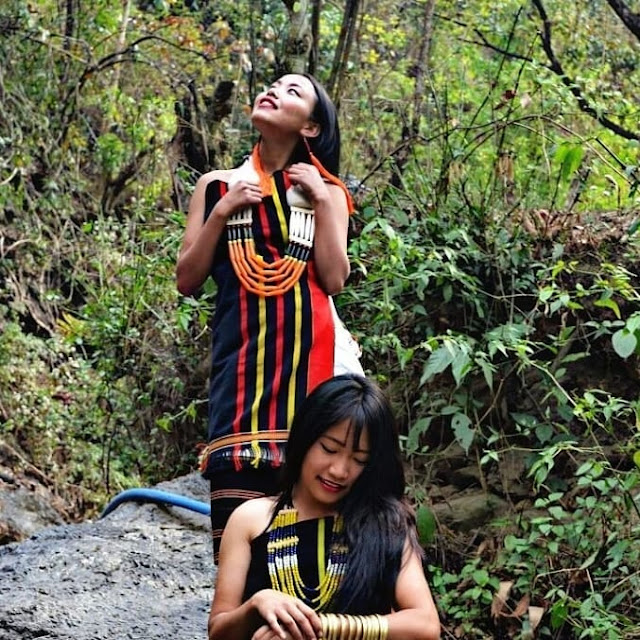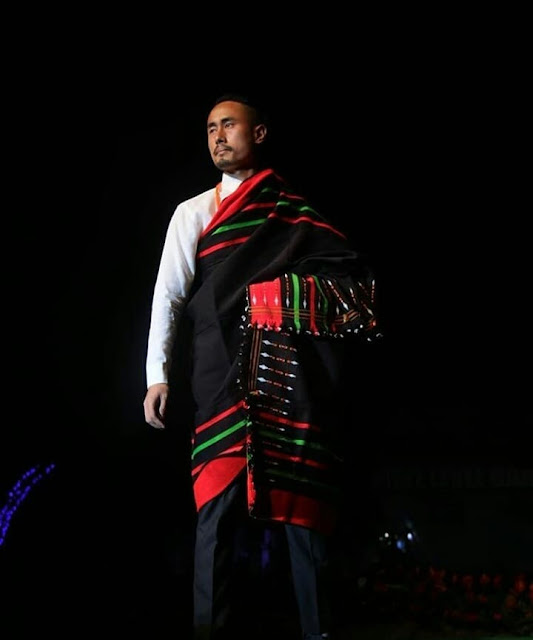The Poumai Naga tribe is an ethnic group inhabiting in parts of Manipur and in Phek district, Nagaland.
The Poumai Naga is one of the oldest and major tribe among
the Naga tribes, it was recognized by the Central Government of India under the
Constitution of Scheduled Tribe and Scheduled Caste Order (Amendment) Act 2002.
There are around 78 different villages in Poumai tribe. In Nagaland and Manipur. The Poumai tribe is considered an important tribe since times immemorial.
According to the 2011 Census, the total population of the Poumai tribe including Poumai in four villages in Phek district, Nagaland is 1,85,689. About 95% of the total population of Poumai is in the Senapati district, Manipur. Poumai Naga is the single largest tribe with 42% of the total population in the district of Senapati, Manipur.
The word Poumai is derived from two syllables "POU" and "MAI". "POU" was the name of the ancestor and "MAI" signifies "People" (the descendants of POU). The literal meaning of POUMAI signifies "People of Pou".
Descendants of Poumai are:
MEO, LEO and PAO are the descendants of POU. The production of Pouli (pou earthen pot) and poutai (pou salt) was known to the entire tribal areas in Manipur a Nagaland since ancient time.
The whole Poumai Naga community is divided into three circles as
(1) CHILIVAI CIRCLE
(2) LEPAONA CIRCLE
(3) PAOMATA CIRCLE.
During the depression of the Nagas from Makhel (located in
Mao Naga territory), the Poumai Naga headed in two directions Northeast and
South East.
The descendent of Leo (Lepaona) headed to the southeast direction
and settled at Koide village under the initiative of Chief Rokhuo. The descendant
of Pao (Paomata) headed to Northeast direction and settled at Saranamai. The descendant
of Prou (Chilivai) likewise headed in Northeast direction and settled at
Prouphii.
Before the landing of British to the Naga Hills (1896), the
Poumai Nagas were not presented to the outside world. Headhunting during this
period of time was a common practice; hunting, fishing, and agriculture were the
main occupations in the pre-British period.
The Poumai Naga had no caste system in terms of rich or poor,
high or low, pure and untouchables but they believe in having a large family member is a boon.
After the arrival of the British colony, it brought a drastic
social change to the community through the setting up of roadways, healthcare,
infrastructure, institutions, etc.
The language that Poumai communicate is known as "POULA". They have
rich culture, tradition, and Christianity is the dominant religion in the Poumai
Community.
Different types of Organization that are actively involved in the development of Poumai community are:
- The Poumai Masou Me, (PMM) (Poumai Naga Union)
- Poumai Tsiidoumai Me, (PTM) (Poumai Students’ Organization)
- Poumai Naotoumai Me, (PNM) (Poumai Women Organization)
- Chiliive Naga Union, (CNU) (North Eastern Poumai Organization)
- Lepaona Naga Union, (LNU) (South Eastern Poumai Organization)
- Paomata Council, (PC) (Western Poumai Organization)
- Razeba Public Organization, (RPO) (Northern Poumai Organization in Nagaland)
- Poumai Naga Baptist Association (PNBA)
- Poumai Catholic Mai Me, (PCM).
Festivals of Poumai Naga:
Nii (Festival) is one of the most significant social activities
for the community. Festival is an opportunity to celebrate together with the family
and friends from far and close. There are some significant religious festivals
of Poumai Naga and it includes some religious rituals and customs. However, the
Christians celebrate a wide range of festivals with no customary religious
rituals and custom.
Some of the popular festivals of Poumai Naga tribe are:
Paonii, Donii, Laonii, Daonii, Rounii, Duhnii, Loukanii, Thounii, Khiinii, Taithounii etc. Most of the festivals are celebrated only in some villages. Except the Paonii Thounii, Donii, and Laonii festivals are celebrated in all the Poumai circles.Introduction of Christianity in Poumai Naga Tribe:
It is an important event that brought changes in the social culture
and economic life of the Poumai community. Numerous Poumai villagers
acknowledged Christianity yet the majority of the populations were non-Christians
amid the British time frame in the Naga Hills. A missionary Rev. Pettigrew introduced
Christianity in Manipur State in 1894.
In Manipur Christianity was begun from Ukhrul then spread to different Districts. A missionary from Tangkhul introduced Christianity to the Mao Naga Tribe and afterward, M. Lorho from Mao Naga missionary first planted the seed of Gospel to Maiba and it's neighboring villages thus brought Christianity to the Poumai Naga.
In Manipur Christianity was begun from Ukhrul then spread to different Districts. A missionary from Tangkhul introduced Christianity to the Mao Naga Tribe and afterward, M. Lorho from Mao Naga missionary first planted the seed of Gospel to Maiba and it's neighboring villages thus brought Christianity to the Poumai Naga.
Traditional Dresses and Ornaments of Poumai Naga Tribe:
The Naga tribes have different types of colorful attire and
shawls. The Poumai tribe has various types of ornaments and dresses for various
purposes. The traditional ornaments and dresses are commonly used at various festivals.
In Poumai villages Dolousa and Khailousa (produced using wild jute) was mainly
used for dresses before wool was imported.
Khekaisa: - It is a dignitary shawl for men and to be worn
by the elected leaders (MP/MLA/MDC), Gazetted officers, Ordained Ministers
(Reverend) and social activists.
The dignitary shawl for women is known as Loukaisa, Zhosousa: Zhosa, Riidusa or Nghasa and Khaopeiteisa or Khaopeidasa etc.
All the sections of Poumai use community shawl known as Sousa or Teisa.
The dignitary shawl for women is known as Loukaisa, Zhosousa: Zhosa, Riidusa or Nghasa and Khaopeiteisa or Khaopeidasa etc.
All the sections of Poumai use community shawl known as Sousa or Teisa.
Different types of Songs and Dance of Poumai Tribe:
The identity of a Poumai tribe also shows through their traditional
dance and songs. There are diverse types of Poumai Naga folksongs like Poetic
folksongs, Patriotic folksongs, Romantic folksongs, Feast of Merit folksongs and
Rice men folksongs. The vast majority of the folksongs are composed by Lana and
Chii.
The main musical instruments are:
- Lana (a long string with a stick joined to half gourd shell)
- Chii (made of little part bamboo)
- Nghakai (made of buffalo horn)
- Shah and Be (made of bamboo with four holes)
Food Habit of Poumai Naga:
Food habits depend on individual preferences of different
races, religious beliefs and geographical location.
The Poumai's used no spices or little spices in their dishes. Majority of Poumai population are non-vegetarians and they have three meals in a day.
The Poumai's used no spices or little spices in their dishes. Majority of Poumai population are non-vegetarians and they have three meals in a day.
Conclusion:
Tremendous changes were brought to the Poumai community
through the introduction of the Christian religion. The Christian Missionaries
taught the people to help and love one another and thus boost to stop
headhunting practice in Poumai villages.
Another important change that occurred was the establishment of infrastructure, roadways and modern education.
Education in Poumai villages commenced very late as compared to other tribes like the Tangkhul and Mao.
Another important change that occurred was the establishment of infrastructure, roadways and modern education.
Education in Poumai villages commenced very late as compared to other tribes like the Tangkhul and Mao.




Thanks for this blog website ....I got everything needed to make my art integrated project in school ...I got the topic of Manipur..
ReplyDeleteVery Very Very Thanks to You
I borrow out money with 3%,For any Assistance or Query please Contact me Via whatsap: +91 8857047852
ReplyDeleteEmail: capitallendinghelpdesk@gmail.com